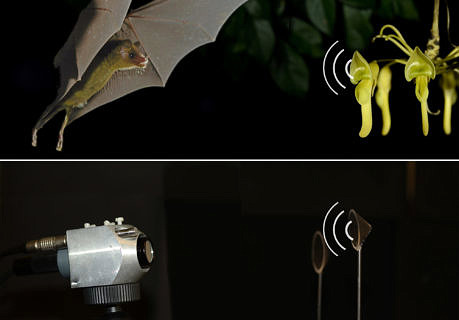Research team develops efficient robot navigation inspired by bat flower

From the bat flower to sonar navigation
Sonar systems are indispensable for robots and self-propelled cars, as they are very cost-effective sensors for distance measurements. However, sometimes the achievable measurement results are misleading and until now there have been no sonar signs, signs or signals that can support navigation. Now a FAU research team, together with scientists from the universities of Antwerp and Amsterdam, has found a solution inspired by a special co-evolution between bats and flowers. They have published their results in the Technical journal PNAS.
Sonar sensors play an important role in new technologies, such as navigation systems in autonomous robots and self-propelled cars. The sensors are inexpensive, energy efficient and usually provide very accurate measurements. “However, they also have disadvantages,” says Prof. Dr. Stefan Rupitsch from the FAU’s Department of Sensor Technology. “Their measurements can sometimes be ambiguous, and this can lead to confusing situations for an autonomous vehicle or robot.”
In a project financed by the Volkswagen Foundation at FAU, the engineer Prof. Dr. Stefan J. Rupitsch and the biologist and bat researcher Dr. Ralph Simon worked together with researchers from the University of Antwerp and the Vrije Universiteit Amsterdam to find a solution to this problem. The two found inspiration in an interesting symbiosis of bats and flowering plants. read more…
